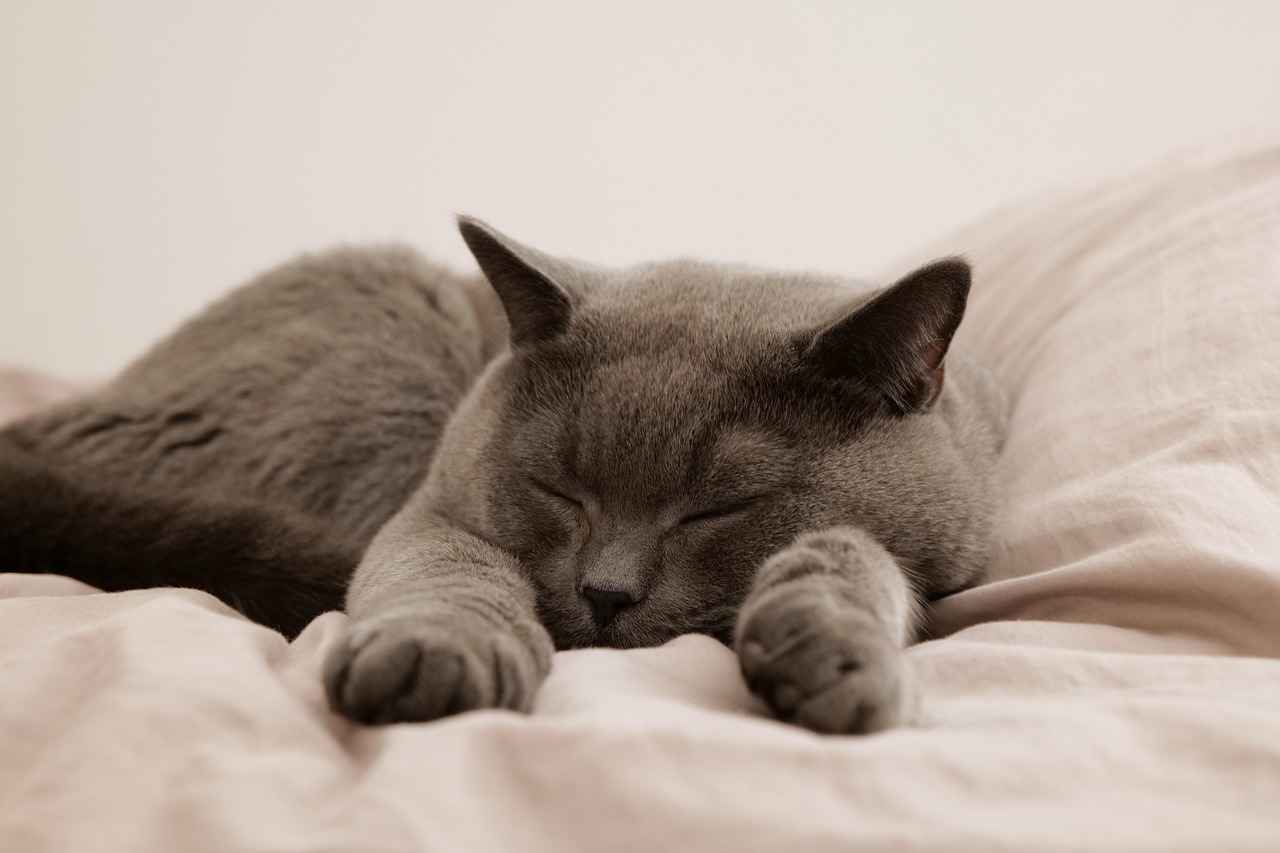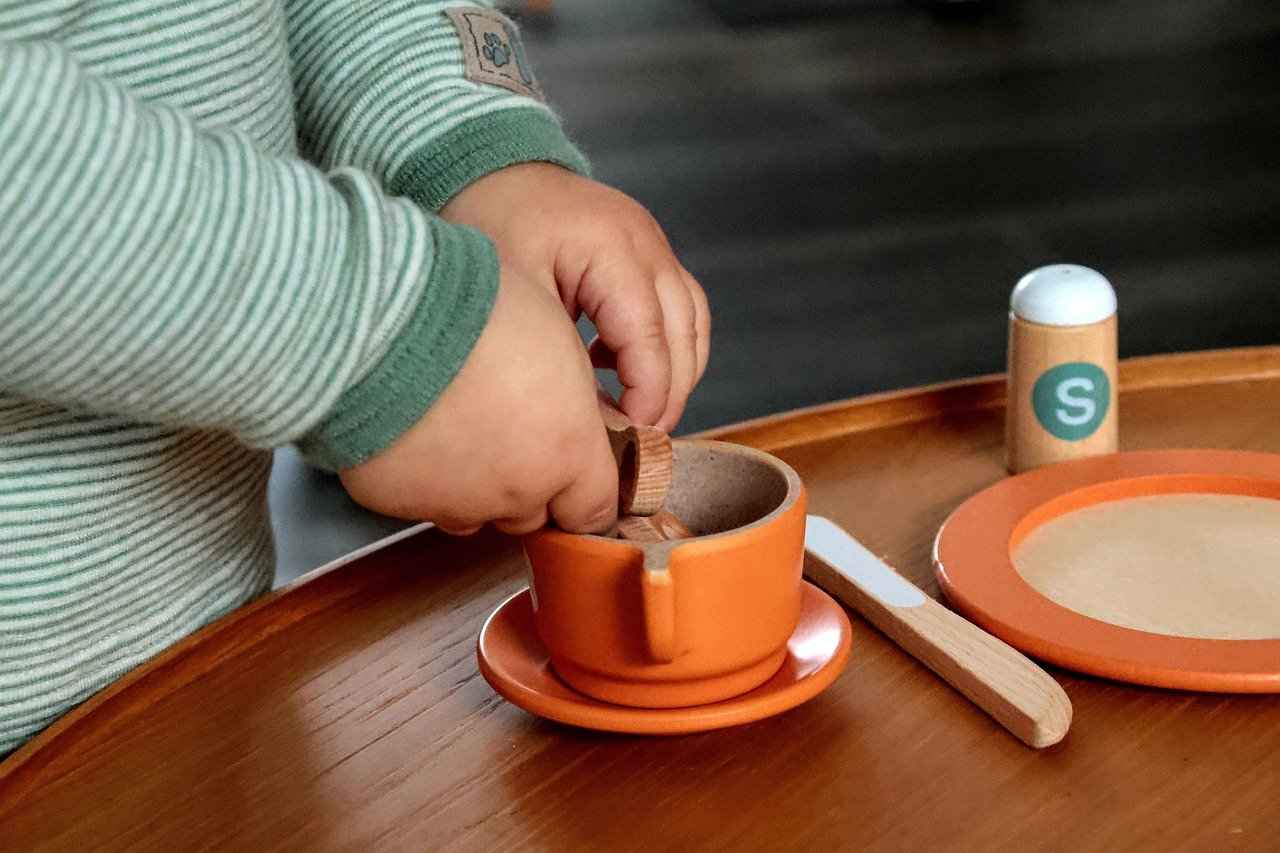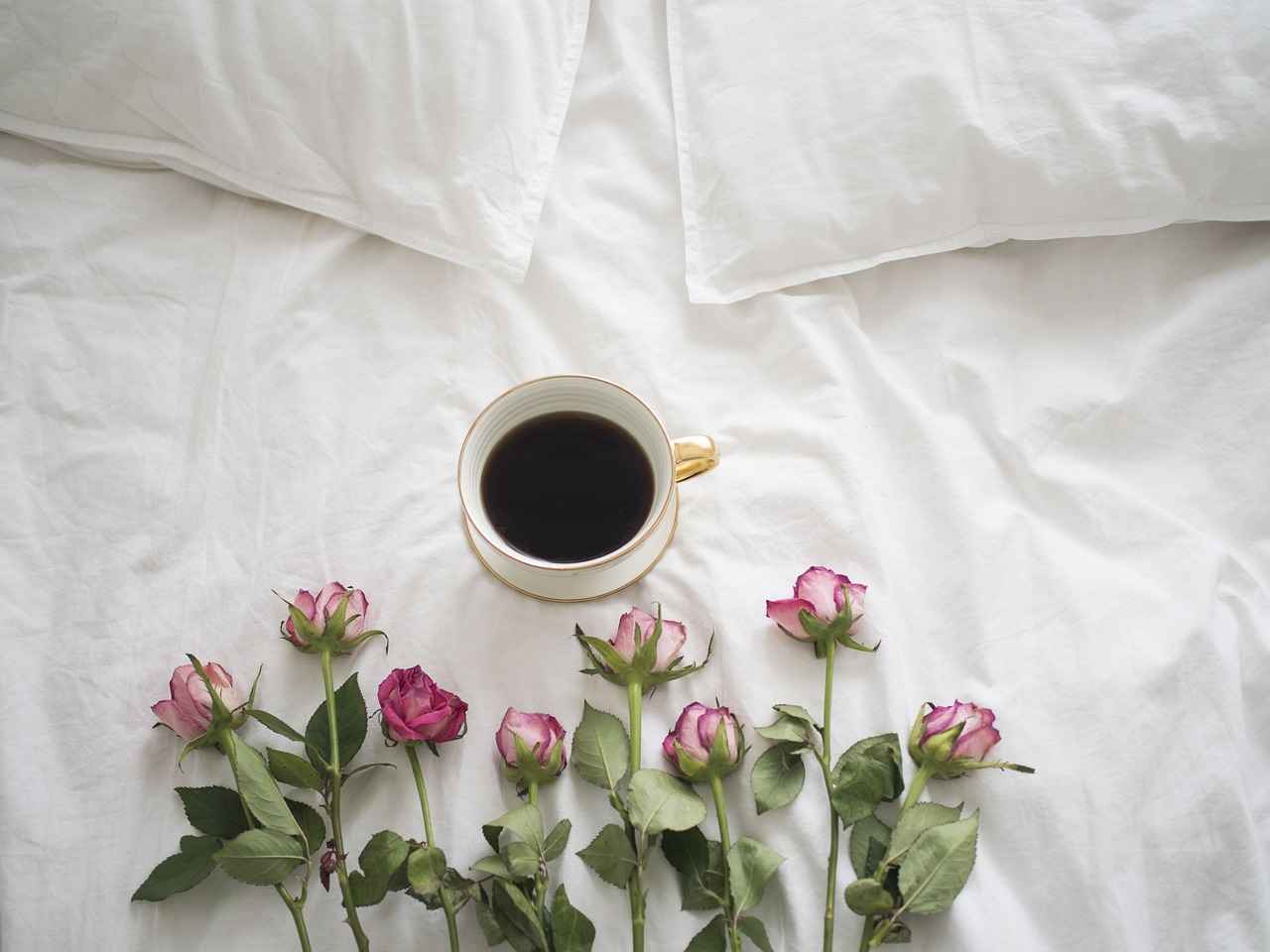This article explores the charm and functionality of Indian wooden bed designs, highlighting their cultural significance, craftsmanship, and how they enhance traditional home aesthetics.
Indian wooden beds are not just functional pieces of furniture; they are a reflection of the country’s rich cultural heritage. Each design tells a story, showcasing the artistry and skill of the craftsmen who create them. With various styles available, these beds can cater to different preferences and needs, making them a popular choice for traditional homes.
Understanding Indian Wooden Bed Designs
Indian wooden bed designs are diverse, with each style often representing the unique traditions of its region. Some common characteristics include:
- Intricate carvings that depict cultural motifs.
- Natural finishes that enhance the wood’s beauty.
- Robust construction ensuring longevity and durability.
Types of Indian Wooden Beds
There are several types of Indian wooden beds, each serving different purposes. Here are some popular options:
- Traditional Four-Poster Beds: Known for their grandeur, these beds often feature elaborate carvings and canopies, symbolizing luxury and comfort.
- Low-Height Beds: Also known as charpoys, these beds are appreciated for their simplicity and comfort, making them ideal for casual lounging.
Materials Used in Indian Wooden Beds
The choice of wood significantly impacts both the durability and aesthetics of a bed. Commonly used materials include:
- Teak Wood: Renowned for its strength and resistance to moisture, teak is a favored material for crafting long-lasting beds.
- Sheesham Wood: Also known as Indian rosewood, sheesham is celebrated for its beautiful grain and durability, making it an excellent choice for bed construction.
Craftsmanship in Indian Bed Design
The artistry involved in creating Indian wooden beds is often a blend of traditional techniques and modern innovations. Key aspects include:
- Hand-Carving Techniques: Artisans use various hand-carving methods to create intricate patterns, adding a unique touch to each piece.
- Finishing Touches: The finishing process not only enhances the visual appeal but also protects the wood from wear and tear.
Benefits of Choosing Wooden Beds
Wooden beds offer numerous advantages, making them a popular choice for traditional homes:
- Durability and Longevity: Quality wood construction contributes to a longer lifespan, making these beds a wise investment.
- Natural Aesthetics: Wooden beds bring a warm and inviting atmosphere to any room, complementing various interior design styles.
Maintaining Your Indian Wooden Bed
Proper maintenance is essential to preserve the beauty and durability of wooden beds. Here are some practical tips:
- Regular Cleaning Techniques: Use a soft cloth to dust the bed regularly and keep it looking its best.
- Preventing Damage: Consider using coasters and protective pads to prevent scratches and dents.
Where to Buy Indian Wooden Beds
Finding the right place to purchase an Indian wooden bed can be daunting. Consider these options:
- Local Artisans and Markets: Supporting local craftsmen promotes traditional techniques and ensures quality.
- Online Retailers: Online shopping offers convenience and a broader selection, but ensure to check reviews and seller ratings before making a purchase.

Understanding Indian Wooden Bed Designs
Indian wooden beds are a stunning embodiment of the country’s rich cultural heritage, showcasing a variety of designs that reflect the diverse traditions and craftsmanship of different regions. Each style is unique, offering both aesthetic appeal and functionality. In this section, we will explore the defining characteristics of these beautiful wooden bed designs, highlighting their significance and the artistry involved in their creation.
- Rich Cultural Heritage: The designs of Indian wooden beds often draw inspiration from ancient traditions, folklore, and regional art forms. This cultural richness is evident in the intricate carvings, motifs, and colors used in the beds.
- Variety of Styles: From ornate four-poster beds to minimalist low-height charpoys, Indian wooden beds come in a plethora of styles. Each style serves different functional needs and aesthetic preferences, catering to a wide range of consumers.
- Craftsmanship: The craftsmanship involved in making these beds is exceptional. Artisans often employ traditional techniques passed down through generations, resulting in unique pieces that are not only functional but also works of art.
- Material Selection: The type of wood used plays a crucial role in the design and durability of the bed. Popular choices include teak and sheesham, known for their strength, beauty, and resistance to wear and tear.
In addition to aesthetics, the functionality of Indian wooden beds is paramount. Many designs are created with comfort in mind, ensuring a good night’s sleep while also being sturdy and reliable. Furthermore, the natural properties of wood contribute to a warm and inviting atmosphere in any bedroom, making these beds a popular choice for traditional homes.
Moreover, the intricate details in the carvings and finishes of Indian wooden beds often tell a story or represent a particular cultural theme, adding depth to their beauty. For instance, some beds feature floral patterns or geometric designs that are symbolic of the region’s heritage. This attention to detail not only enhances the visual appeal but also connects the owner to their cultural roots.
Another significant aspect of Indian wooden bed designs is their adaptability. While traditional designs are prevalent, many artisans are now blending contemporary elements with classic styles, resulting in versatile pieces that can fit into modern interiors. This fusion of old and new ensures that Indian wooden beds remain relevant in today’s market while still honoring their historical significance.
Ultimately, understanding Indian wooden bed designs goes beyond mere aesthetics; it involves appreciating the cultural narratives and artisanal skills that shape these unique pieces. As consumers become more aware of the importance of sustainability and craftsmanship, the demand for these beautifully crafted beds continues to grow, ensuring that the rich tradition of Indian woodworking thrives for generations to come.

Types of Indian Wooden Beds
When it comes to enhancing the charm of traditional homes, Indian wooden beds stand out as a timeless choice. Their rich cultural heritage and craftsmanship make them not only functional but also a statement piece in any bedroom. In this section, we will explore the various types of Indian wooden beds, each designed to cater to different needs and aesthetic preferences.
There are several types of Indian wooden beds, each serving different purposes and styles. Here, we categorize and describe the most popular options available:
- Traditional Four-Poster Beds:
Four-poster beds are a classic choice in Indian homes, often featuring intricate carvings and rich fabrics. These beds have a regal presence and are often associated with luxury and comfort. Historically, they provided privacy and warmth, and today, they serve as a stunning focal point in bedrooms.
- Low-Height Beds (Charpoys):
Known for their simplicity and comfort, low-height beds, or charpoys, are popular in many Indian households. They are typically made with a wooden frame and woven jute or cotton ropes, offering a unique blend of traditional design and modern functionality. Their low profile makes them ideal for casual lounging.
- Storage Beds:
With space becoming a premium in urban settings, storage beds have gained popularity. These beds come with built-in drawers or compartments, providing a practical solution for storing linens, clothes, or other essentials. They combine style with functionality, making them a perfect fit for contemporary homes.
- Platform Beds:
Platform beds are characterized by their sleek and minimalistic design. They typically have a low profile and do not require a box spring, making them a cost-effective option. These beds are often made from solid wood and can easily complement various interior styles, from modern to rustic.
- Canopy Beds:
Canopy beds add a touch of elegance and drama to any bedroom. Often adorned with flowing fabrics, they create a cozy and intimate atmosphere. In Indian designs, these beds often feature ornate carvings and rich textiles, making them a luxurious choice for those looking to make a statement.
Each type of Indian wooden bed serves a distinct purpose and style, making it essential to consider your space and aesthetic preferences when choosing the right one. Whether you lean towards the opulence of a four-poster bed or the practicality of a storage bed, there is an option that will perfectly suit your needs.
In summary, the variety of Indian wooden beds available today reflects the rich tapestry of Indian culture and craftsmanship. By understanding the different types, you can make an informed decision that enhances both the functionality and beauty of your home.
Traditional Four-Poster Beds
Traditional four-poster beds have long been a symbol of elegance and luxury in Indian homes. Their **intricate carvings** and **rich fabrics** not only enhance the aesthetic appeal of a bedroom but also carry significant historical weight. These magnificent pieces of furniture have evolved over centuries, reflecting the rich tapestry of Indian culture and craftsmanship.
The origins of four-poster beds can be traced back to the **medieval era**, where they were primarily used in royal households. The four posts provided a sense of privacy and security, often draped with **heavy fabrics** to shield the occupants from cold drafts and insects. In India, these beds are often adorned with **detailed carvings** that depict various motifs, from floral patterns to mythological scenes, showcasing the skill of local artisans.
In modern times, the four-poster bed has been adapted to suit contemporary tastes while still retaining its traditional charm. Many modern designs incorporate **lighter materials** and **minimalist aesthetics**, making them suitable for a variety of interior designs. The use of **natural fabrics** such as cotton and linen for drapes adds a touch of comfort while maintaining the bed’s regal appearance.
One of the most appealing aspects of four-poster beds is their versatility. They can serve as a stunning focal point in a master bedroom or be used in guest rooms to create a cozy, inviting atmosphere. Additionally, the height of the posts allows for creative decorating options, such as hanging **fairy lights** or using **canopy fabrics** to create a dreamy retreat.
When considering a four-poster bed, it is essential to think about the size and scale in relation to the room. A large bed can dominate a small space, while a more modestly sized bed can enhance the room’s overall design without overwhelming it. Furthermore, choosing the right materials, such as **sheesham wood** or **teak**, can ensure durability and longevity, allowing the bed to become a cherished family heirloom.
In addition to their aesthetic and functional benefits, four-poster beds also hold cultural significance in many Indian households. They often symbolize **heritage and tradition**, passed down through generations. Families may choose to invest in a handcrafted four-poster bed, supporting local artisans and preserving traditional craftsmanship. This not only enriches the home environment but also fosters a connection to cultural roots.
In conclusion, traditional four-poster beds are more than just furniture; they are a blend of history, artistry, and modern adaptation. Their **timeless elegance** and **functional design** make them a worthy addition to any Indian home. Whether you prefer a classic style or a contemporary twist, a four-poster bed can elevate your living space, offering both beauty and comfort.
Low-Height Beds
, often referred to as charpoys, hold a significant place in Indian culture and design. These beds are characterized by their minimalistic structure, typically featuring a low frame that sits close to the ground. This design not only offers a unique aesthetic appeal but also provides numerous practical benefits that make them a popular choice in many households.
One of the most notable aspects of low-height beds is their comfort. The lower height makes it easier for individuals, especially the elderly and children, to get in and out of bed. This accessibility is a key factor that contributes to their enduring popularity across generations.
In terms of design, low-height beds come in various styles, often showcasing the rich craftsmanship of Indian artisans. Many of these beds are made from high-quality woods such as teak and sheesham, known for their durability and beautiful grain. The simplicity of the low-height design allows for intricate carvings and embellishments, adding a touch of elegance to any bedroom.
Additionally, low-height beds are versatile in their application. They can seamlessly fit into various interior design styles, from traditional to contemporary. Their understated elegance makes them suitable for bedrooms of all sizes, allowing for creative use of space. For instance, they can be paired with vibrant bedding and cushions to create a cozy, inviting atmosphere.
Another key advantage of low-height beds is their cooling properties. In many regions of India, especially during the hot summer months, sleeping closer to the ground can provide a cooler sleeping environment. This is particularly beneficial in areas with high temperatures, where traditional high beds may trap heat.
Low-height beds also encourage a more relaxed lifestyle. The act of sitting or lying down on a low bed promotes a laid-back atmosphere, which aligns with the traditional Indian way of life that values comfort and leisure. This cultural significance adds to their appeal, making them more than just a piece of furniture but a part of a lifestyle.
When considering the purchase of a low-height bed, it is essential to evaluate the craftsmanship and materials used. Look for beds that are handcrafted by local artisans, as these often showcase superior quality and attention to detail. Supporting local craftspeople not only helps preserve traditional techniques but also ensures that you are acquiring a unique piece that reflects cultural heritage.
In terms of maintenance, caring for low-height beds is relatively straightforward. Regular dusting and occasional polishing can keep the wood looking pristine. It’s also important to avoid exposing the bed to direct sunlight for extended periods, as this can cause fading and damage to the wood.
In summary, low-height beds are a perfect blend of tradition and functionality. Their cultural significance, combined with practical advantages such as comfort and accessibility, makes them a valuable addition to any home. Whether you are looking to enhance your bedroom’s aesthetic or seeking a comfortable sleeping solution, low-height beds offer a timeless choice that resonates with both style and cultural heritage.
charpoys,
Charpoys, a traditional Indian bed, are not just a piece of furniture; they embody a rich cultural heritage that dates back centuries. These low-height beds are characterized by their simple yet elegant design, often featuring a wooden frame with woven jute or cotton ropes. In this article, we will explore the various aspects of charpoys, including their history, design variations, materials, and their significance in modern homes.
Understanding Charpoys: A Cultural Icon
Charpoys have been a staple in Indian households, especially in rural areas. They are known for their comfort and versatility, making them suitable for both sleeping and lounging. Traditionally, charpoys are made with a wooden frame, which is often hand-carved, showcasing the artistry of local craftsmen.
Types of Charpoys
- Traditional Charpoys: These are the classic versions, featuring a rectangular frame and a woven surface. They are typically made from sheesham or teak wood.
- Modern Charpoys: Today, charpoys are available in various designs, including contemporary styles that incorporate metal frames and different fabric options.
- Portable Charpoys: Lightweight and easy to assemble, these charpoys are perfect for outdoor use, allowing families to enjoy the fresh air.
Materials Used in Charpoys
The choice of materials significantly affects the durability and comfort of charpoys. Common materials include:
- Wood: Traditionally, charpoys are made from hardwoods like sheesham and teak, known for their strength and longevity.
- Rope: The woven surface is usually made from natural fibers like jute or cotton, which provide comfort and breathability.
Craftsmanship and Artistry
One of the most appealing aspects of charpoys is the handcrafted nature of their construction. Artisans often use intricate hand-carving techniques to embellish the wooden frames, adding a touch of elegance to these functional pieces. The finishing touches, such as polishing and staining, enhance the natural beauty of the wood while protecting it from wear and tear.
Benefits of Choosing Charpoys
Charpoys offer numerous advantages, making them a preferred choice for many:
- Durability: Quality craftsmanship ensures that charpoys can withstand daily use for years.
- Comfort: The woven surface provides a comfortable sleeping experience, especially in warm climates.
- Eco-Friendly: Made from natural materials, charpoys are an environmentally friendly option compared to synthetic furniture.
- Versatility: They can be used indoors or outdoors, making them suitable for various settings.
Maintaining Your Charpoy
To ensure the longevity of your charpoy, regular maintenance is essential. Here are some practical tips:
- Cleaning: Use a soft cloth to wipe the wooden frame and a vacuum to clean the woven surface.
- Protection: Avoid placing heavy objects on the charpoy to prevent damage to the woven material.
Where to Buy Charpoys
When looking to purchase a charpoy, consider the following options:
- Local Artisans: Supporting local craftsmen ensures quality and promotes traditional techniques.
- Online Retailers: Many online platforms offer a wide range of charpoys, providing the convenience of home delivery.
In conclusion, charpoys are more than just beds; they are a testament to India’s rich cultural heritage and craftsmanship. Their unique design, comfort, and versatility make them a valuable addition to any home.
are popular in many Indian homes for their simplicity and comfort. We explore their design features and cultural relevance in this segment.
Elegant & Durable Indian Wooden Bed Design for Traditional Homes
This article explores the charm and functionality of Indian wooden bed designs, highlighting their cultural significance, craftsmanship, and how they enhance traditional home aesthetics.
Understanding Indian Wooden Bed Designs
Indian wooden beds come in various styles, each reflecting the rich cultural heritage of the region. The unique designs are characterized by intricate carvings, vibrant colors, and the use of high-quality wood. These beds serve not only as furniture but also as art pieces that tell stories of tradition and craftsmanship.
Types of Indian Wooden Beds
- Traditional Four-Poster Beds: These classic choices often feature elaborate carvings and rich fabrics, symbolizing luxury and comfort. Historically, they were used by royalty, making them a statement piece in any traditional home.
- Low-Height Beds: Also known as charpoys, these beds are popular for their simplicity and comfort. They are typically made from sturdy wood and woven materials, reflecting a minimalist yet functional design.
Materials Used in Indian Wooden Beds
The choice of wood significantly affects the durability and aesthetics of a bed. Commonly used woods include:
- Teak Wood: Renowned for its strength and resistance to moisture, teak is a favored material for crafting durable Indian wooden beds.
- Sheesham Wood: Also known as Indian rosewood, Sheesham is celebrated for its beautiful grain and durability, making it an excellent choice for bed construction.
Craftsmanship in Indian Bed Design
The craftsmanship involved in creating Indian wooden beds is a blend of traditional techniques and modern innovations. Artisans often employ:
- Hand-Carving Techniques: This hallmark of Indian furniture design showcases intricate patterns and designs that add character to each piece.
- Finishing Touches: The finishing process enhances the beauty and longevity of wooden beds, with various types of finishes available to suit different styles.
Benefits of Choosing Wooden Beds
Wooden beds offer numerous advantages over other materials, making them a popular choice for traditional homes. Key benefits include:
- Durability and Longevity: Quality wood construction contributes to a longer lifespan, making wooden beds a wise investment.
- Natural Aesthetics: Wooden beds bring a warm, natural aesthetic to any room, complementing various interior design styles.
Maintaining Your Indian Wooden Bed
Proper maintenance is essential to preserve the beauty and durability of wooden beds. Consider these tips:
- Regular Cleaning Techniques: Regular cleaning helps maintain the bed’s appearance. Use a soft cloth and mild cleaner to avoid damage.
- Preventing Damage: Preventive measures can help avoid common issues like scratches and dents. Use coasters and avoid placing heavy items directly on the bed.
Where to Buy Indian Wooden Beds
Finding the right place to purchase an Indian wooden bed can be daunting. Consider these options:
- Local Artisans and Markets: Supporting local artisans not only promotes traditional craftsmanship but also ensures quality.
- Online Retailers: Online shopping offers convenience and a wider selection. Look for reputable sellers with good reviews and clear return policies.
Materials Used in Indian Wooden Beds
The choice of wood significantly affects the durability and aesthetics of a bed. This section examines the various types of wood commonly used in Indian bed designs, shedding light on their unique characteristics and advantages.
When it comes to crafting wooden beds, the selection of wood is paramount. Different types of wood offer varying levels of strength, beauty, and resistance to environmental factors. In Indian bed designs, the following types of wood are most commonly utilized:
- Teak Wood: Known for its exceptional durability, teak wood is a popular choice for Indian wooden beds. Its natural oils make it resistant to moisture and pests, ensuring longevity. Teak’s rich golden-brown hue and fine grain add elegance to any bedroom, making it a favored option for both traditional and contemporary designs.
- Sheesham Wood: Also known as Indian rosewood, sheesham is celebrated for its beautiful grain patterns and robust nature. This hardwood is not only durable but also boasts a warm, reddish-brown color that enhances the aesthetic appeal of wooden beds. Its resilience against warping and cracking makes it ideal for intricate carvings and detailed designs.
- Sal Wood: Sal wood is another sturdy option, often used in the construction of traditional Indian furniture. Known for its strength and resistance to decay, sal wood is perfect for beds that require a robust structure. Its natural grain and light color can complement various interior styles, making it a versatile choice.
- Mango Wood: Mango wood is an eco-friendly choice that is gaining popularity due to its sustainability. This hardwood is not only affordable but also features a unique grain and color variations, allowing for creative designs. While it may not be as durable as teak or sheesham, properly treated mango wood can last for years.
- Acacia Wood: Acacia wood is known for its rich hues and striking patterns. It is a dense hardwood that offers excellent durability and resistance to wear and tear. Acacia’s natural oils provide protection against moisture, making it suitable for various climates.
Each type of wood brings its own set of benefits, and the choice ultimately depends on personal preferences and the desired style of the bed. For instance, teak and sheesham are often preferred for their luxurious appearance and lasting quality, while mango and acacia offer more affordable and sustainable options.
In addition to the type of wood used, the craftsmanship involved in the design and construction of these beds plays a crucial role in their overall appeal. Artisans often incorporate traditional techniques such as hand-carving and intricate detailing, which not only enhances the beauty of the bed but also reflects the rich cultural heritage of India.
Furthermore, the finishing touches applied to wooden beds can significantly impact their durability and aesthetics. Common finishes include varnishes, oils, and lacquers that protect the wood while enhancing its natural beauty. Choosing the right finish can help maintain the bed’s appearance over time, ensuring it remains a stunning centerpiece in any bedroom.
In conclusion, the materials used in Indian wooden beds are diverse, each offering unique benefits that cater to different tastes and requirements. Understanding these options can help individuals make informed decisions when selecting the perfect bed for their home.
Teak Wood
has long been celebrated for its exceptional qualities, making it a top choice for crafting durable Indian wooden beds. Known for its remarkable strength and resistance to moisture, teak wood offers numerous advantages that cater to both aesthetic and functional needs in bedroom furniture.
One of the primary reasons for the popularity of teak wood is its natural durability. This hardwood is dense and resilient, able to withstand wear and tear much better than many other types of wood. Its natural oils act as a protective barrier against moisture, making it less prone to warping, cracking, or splitting. This quality is particularly beneficial in humid climates, where other woods might deteriorate quickly.
Additionally, teak wood has a beautiful, rich color and grain pattern that enhances the visual appeal of any wooden bed. The warm tones of teak can easily complement various interior design styles, from traditional to contemporary. Its elegant finish often requires minimal treatment, allowing it to retain its natural beauty over time.
When considering the environmental impact, teak wood is often sourced from sustainable plantations, making it an eco-friendly choice for consumers who prioritize sustainability. Many reputable manufacturers ensure that their teak wood comes from responsibly managed forests, which helps in preserving biodiversity and supporting local communities.
Furthermore, the craftsmanship involved in creating teak wooden beds often highlights intricate designs and traditional techniques. Artisans skilled in woodworking take pride in their ability to transform this beautiful material into stunning pieces of furniture that tell a story. The combination of hand-carving and modern technology allows for unique designs that cater to individual tastes and preferences.
In terms of maintenance, teak wood is relatively easy to care for. Regular dusting and occasional polishing with a suitable wood conditioner can help maintain its luster and protect it from scratches. Additionally, because of its moisture-resistant properties, teak beds can be used in various settings without the constant worry of damage from humidity.
In conclusion, the choice of teak wood for Indian wooden beds is driven by its strength, moisture resistance, and natural beauty. Its durability ensures that beds crafted from this material can last for generations, making it a worthy investment for any home. Whether you are looking for a traditional four-poster bed or a modern low-height design, teak wood offers the perfect blend of functionality and elegance, making it a favored material in the world of furniture design.

Sheesham Wood
, also known as Indian rosewood, is one of the most sought-after materials for crafting wooden beds in traditional Indian homes. This hardwood is not only appreciated for its aesthetic appeal but also for its remarkable durability and strength, making it an ideal choice for bed construction. In this section, we will delve deeper into the numerous advantages of using Sheesham wood in bed design.
One of the most notable characteristics of Sheesham wood is its unique grain pattern. The wood exhibits a rich, warm hue that can vary from light to dark brown, often featuring streaks of golden or reddish tones. This natural variation enhances the visual appeal of the furniture, allowing each piece to possess its own distinct personality. As a result, beds made from Sheesham wood can serve as stunning focal points in any bedroom, seamlessly blending with various interior design styles.
In addition to its beauty, Sheesham wood is renowned for its durability. It is resistant to warping and cracking, which is crucial for furniture that undergoes daily use. This resilience ensures that beds made from Sheesham wood can withstand the test of time, making them a wise investment for homeowners. Furthermore, the wood’s natural oils provide a degree of resistance to pests, such as termites, which can be a significant concern in wooden furniture.
Another advantage of Sheesham wood is its sustainability. Sourced from sustainable forests, Sheesham wood is an eco-friendly choice for environmentally-conscious consumers. By opting for this material, you contribute to the preservation of natural resources while enjoying the benefits of a beautiful and durable product.
- Versatility: Sheesham wood can be crafted into various styles, from traditional to contemporary designs, making it suitable for a wide range of aesthetic preferences.
- Easy Maintenance: The natural finish of Sheesham wood requires minimal upkeep. Regular dusting and occasional polishing are sufficient to keep it looking pristine.
- Comfort: The solid construction of Sheesham wood beds provides excellent support, promoting better sleep and comfort for users.
Moreover, the craftsmanship involved in creating Sheesham wood beds is often a blend of traditional techniques and modern innovations. Artisans utilize hand-carving methods to add intricate designs, enhancing the overall appearance of the bed while showcasing the rich cultural heritage of India. This attention to detail not only elevates the aesthetic value but also ensures that each piece is unique.
In conclusion, Sheesham wood stands out as an exceptional choice for bed construction due to its beautiful grain, durability, and sustainability. Its ability to complement various design styles while providing comfort and longevity makes it a favored option among homeowners. Choosing a bed made from Sheesham wood is not just a purchase; it is an investment in quality, style, and cultural heritage.
Craftsmanship in Indian Bed Design
The craftsmanship involved in creating Indian wooden beds is a remarkable fusion of age-old traditions and modern innovations. This artistry is not merely about functionality; it reflects the rich cultural heritage and diverse artistic expressions found across India. In this section, we will explore the intricate details and the skilled techniques that contribute to the beauty and uniqueness of Indian wooden bed designs.
Indian artisans employ a variety of techniques that have been passed down through generations. This includes hand-carving, where skilled craftsmen use chisels and knives to create intricate patterns that often depict nature, mythology, or geometric shapes. The precision and attention to detail in each carving tell a story, making every piece a unique work of art.
While traditional methods remain at the core of Indian bed craftsmanship, many artisans are incorporating modern innovations to enhance functionality and appeal. This includes the use of contemporary designs that cater to modern aesthetics while still honoring traditional craftsmanship. For instance, the integration of ergonomic features ensures comfort without compromising on style.
The choice of materials plays a crucial role in the overall craftsmanship of Indian wooden beds. Artisans often select high-quality woods such as teak and sheesham, known for their durability and beautiful grain. The finishing touches, such as varnishing or oiling, not only enhance the natural beauty of the wood but also protect it from wear and tear. The finishing process is an art in itself, requiring a keen eye for detail and an understanding of how different finishes can affect the wood’s appearance.
In recent years, there has been a growing trend of collaboration between traditional artisans and contemporary designers. This partnership allows for the blending of traditional craftsmanship with modern design principles, resulting in beds that are not only functional but also serve as stunning focal points in a room. These collaborations often lead to innovative designs that appeal to a broader audience, ensuring that the artistry of Indian wooden beds continues to thrive.
Craftsmanship in Indian bed design is not just about creating furniture; it is about preserving a rich cultural heritage. Each piece reflects the history and traditions of the region it comes from. By supporting local artisans and choosing handmade wooden beds, consumers contribute to the sustainability of these age-old practices. This not only helps keep the tradition alive but also promotes the livelihoods of skilled craftsmen.
The artistry behind Indian wooden bed designs is a testament to the skill and creativity of artisans who blend traditional techniques with modern innovations. Through intricate hand-carving, careful selection of materials, and innovative designs, these craftsmen create pieces that are not only functional but also rich in cultural significance. Investing in an Indian wooden bed means embracing a piece of art that carries with it a legacy of craftsmanship and tradition.
Hand-Carving Techniques
Hand-carving is not just a technique; it is an art form that has been passed down through generations of Indian artisans. This time-honored tradition is a hallmark of Indian furniture design, particularly in the creation of exquisite wooden beds. The intricacy and detail involved in hand-carving reflect the rich cultural heritage and craftsmanship that define Indian furniture.
Artisans utilize a variety of to create stunning patterns and designs. These techniques can be broadly categorized into several styles, each showcasing unique elements that resonate with different regions of India. Below are some of the most prominent methods used in the hand-carving of wooden beds:
- Relief Carving: This technique involves carving designs that stand out from the surface of the wood. Artisans create depth by removing material from the background, allowing the design to pop. This method is often used to depict floral patterns or intricate motifs that enhance the bed’s aesthetic appeal.
- Inlay Work: Inlay work combines various materials such as ivory, metal, or colored wood to create stunning visual contrasts. Artisans meticulously carve out spaces in the wood to insert these materials, resulting in a beautiful, multi-dimensional effect.
- Chiseling: A fundamental technique in hand-carving, chiseling allows artisans to create both simple and complex designs. The use of different chisels enables the creation of fine lines and detailed patterns, making each piece unique.
- Engraving: This technique involves etching designs directly onto the wooden surface. It is often used for more delicate patterns, adding a refined touch to the overall design.
- Jali Work: Originating from Islamic architecture, jali work involves intricate lattice designs that allow light and air to pass through. This technique is often employed in bed headboards, adding an element of elegance and sophistication.
The choice of wood plays a significant role in the hand-carving process. Hardwoods like Teak and Sheesham are favored for their durability and ability to hold intricate designs. The grain of the wood also enhances the overall appearance of the carvings, making them more visually appealing.
In addition to the technical skills, the artistry involved in hand-carving wooden beds is deeply rooted in cultural significance. Each pattern and design often tells a story, reflecting the beliefs, traditions, and aesthetics of the region it originates from. For instance, floral motifs may symbolize prosperity and growth, while geometric patterns can represent harmony and balance.
Moreover, the hand-carving process is labor-intensive and requires a great deal of patience and precision. Artisans often spend weeks or even months perfecting a single piece, ensuring that every detail is executed flawlessly. This dedication to craftsmanship not only preserves traditional techniques but also contributes to the uniqueness of each bed.
In conclusion, hand-carving techniques are essential to the creation of Indian wooden beds, showcasing the intricate artistry and cultural heritage that define this furniture style. The combination of various methods and the use of high-quality materials result in stunning pieces that are both functional and aesthetically pleasing, making them a cherished addition to any traditional home.

Finishing Touches
The finishing process is a crucial aspect of woodworking, especially when it comes to enhancing the beauty and longevity of wooden beds. This section delves into the various types of finishes used on Indian wooden beds and how they play a significant role in the overall aesthetic and durability of the furniture.
Types of Finishes for Wooden Beds
- Oil Finishes: Oil finishes, such as linseed and tung oil, penetrate deep into the wood, enhancing its natural grain while providing a protective layer. They are easy to apply and maintain, making them a popular choice for many wooden beds.
- Varnishes: Varnishes provide a hard, durable surface that is resistant to scratches and water. They come in various sheens, from matte to high gloss, allowing homeowners to choose the desired finish that complements their decor.
- Shellac: Shellac is a natural resin that offers a warm, rich finish. It’s known for its quick-drying properties and can be easily repaired, making it a traditional choice for fine furniture.
- Paint: For those looking to add a pop of color or a modern twist to their wooden beds, paint can be an excellent option. High-quality paints designed for wood not only add color but also protect the surface from wear and tear.
Impact of Finishes on Aesthetics
The choice of finish can dramatically affect the appearance of a wooden bed. A high-gloss varnish can create a contemporary look, while an oil finish enhances the natural beauty of the wood grain, giving it a more rustic feel. Additionally, finishes can alter the perceived color of the wood, making it essential to choose wisely based on the desired design aesthetic.
Longevity and Protection
Beyond aesthetics, the finishing process plays a vital role in the longevity of wooden beds. Properly applied finishes protect the wood from moisture, dust, and UV rays, which can lead to fading and deterioration over time. For instance, a good quality varnish can significantly extend the life of the bed by providing a robust barrier against everyday wear and tear.
Maintenance of Finishes
Maintaining the finish on a wooden bed is essential for preserving its beauty and functionality. Regular cleaning with a soft cloth and gentle cleaners can help maintain the finish. For oil finishes, periodic reapplication may be necessary to keep the wood hydrated and protected. In contrast, varnished surfaces can be polished to restore their shine and luster.
Conclusion
In summary, the finishing process is not merely a cosmetic enhancement but a vital component that affects both the beauty and durability of wooden beds. By understanding the different types of finishes available and their impact on aesthetics and longevity, homeowners can make informed choices that will ensure their wooden beds remain a cherished part of their home for years to come.
Benefits of Choosing Wooden Beds
Wooden beds have become a staple in traditional homes, offering a multitude of advantages that make them a preferred choice over beds made from other materials. In this section, we will explore the key benefits of selecting wooden beds, emphasizing their durability, aesthetic appeal, and environmental friendliness.
- Durability and Longevity: One of the standout features of wooden beds is their incredible durability. High-quality wood, such as teak or sheesham, can withstand the test of time, making wooden beds a long-term investment. Unlike metal or particle board, which may sag or warp over time, solid wood maintains its structural integrity, providing you with a reliable sleeping surface for years to come.
- Natural Aesthetics: Wooden beds bring a warm and inviting atmosphere to any bedroom. The natural grains and textures of wood create a unique visual appeal that can enhance various interior design styles, from rustic to modern. The ability to stain or paint wood allows homeowners to customize their beds to match their decor, contributing to a cohesive aesthetic.
- Health Benefits: Wooden beds can contribute positively to your health. Wood is a natural material that does not emit harmful chemicals, unlike some synthetic materials. This can lead to a healthier sleeping environment, free from toxins that may disrupt your sleep or cause allergies.
- Eco-Friendly Choice: Choosing wooden beds can be an environmentally conscious decision. Sustainable forestry practices ensure that wood is sourced responsibly, minimizing the impact on the environment. Additionally, wood is biodegradable, making it a more eco-friendly option compared to synthetic materials that contribute to landfill waste.
- Versatility: Wooden beds are available in a wide range of styles and designs, catering to diverse tastes and preferences. From traditional four-poster beds to modern minimalist designs, there is a wooden bed to suit every interior. This versatility allows homeowners to find the perfect piece that complements their personal style.
- Easy Maintenance: Maintaining wooden beds is relatively straightforward. Regular dusting and occasional polishing can keep the wood looking its best. Unlike upholstered beds, which may require deep cleaning, wooden beds can be easily wiped down, making them a practical choice for busy households.
- Investment Value: Wooden beds often retain their value better than those made from other materials. A well-crafted wooden bed can be a timeless piece that can be passed down through generations, making it not just a purchase but an investment in family heritage.
In summary, the benefits of choosing wooden beds extend far beyond mere aesthetics. Their durability, natural beauty, health benefits, and eco-friendliness make them an excellent choice for anyone looking to enhance the comfort and style of their home. With a variety of designs available, there is a wooden bed to fit every need and preference, ensuring that you can find the perfect centerpiece for your bedroom.
Durability and Longevity
When it comes to furniture, particularly beds, durability and longevity are paramount considerations for homeowners. One of the primary reasons for choosing wooden beds is their inherent durability. The quality of wood construction plays a crucial role in determining how long a bed will last, making it an essential factor for those investing in their home furnishings.
Wooden beds are typically crafted from solid hardwoods such as teak, sheesham, and mahogany. These types of wood are not only aesthetically pleasing but also possess natural properties that contribute to their strength and resilience. For instance, teak wood is known for its high oil content, which makes it resistant to moisture and pests. This characteristic significantly enhances its lifespan, allowing it to withstand the test of time even in varying climatic conditions.
Moreover, the construction techniques used in making wooden beds further enhance their durability. High-quality wooden beds are often constructed using traditional joinery methods, which provide a stronger bond than modern methods that rely on glue or nails. Techniques such as dovetail joints and ensure that the bed frame remains stable and intact, even under heavy weight.
Another aspect that contributes to the longevity of wooden beds is the finishing process. A well-applied finish not only enhances the appearance of the wood but also acts as a protective barrier against scratches, stains, and moisture. Varnishes, lacquers, and oil finishes are commonly used to seal the wood, making it easier to maintain and prolonging its life.
In addition to these factors, the weight-bearing capacity of wooden beds is significantly higher compared to those made from other materials. This robust construction allows them to support heavier mattresses and users without compromising structural integrity. As a result, wooden beds can often last for decades, providing a reliable sleeping solution for generations.
Furthermore, the natural aging process of wood can add to its character and charm over time. Unlike synthetic materials that may wear out or lose their appeal, wooden beds develop a unique patina that can enhance their beauty and value. Many homeowners appreciate this aspect, as it contributes to the overall aesthetic of their living spaces.
In conclusion, the durability and longevity of wooden beds are attributed to the quality of the wood, the craftsmanship involved in their construction, and the finishing techniques used. Investing in a well-made wooden bed not only ensures a comfortable sleep experience but also provides a lasting piece of furniture that can be cherished for years to come.

Natural Aesthetics
Wooden beds are more than just functional furniture; they are a statement of style and warmth that can transform any room into a cozy retreat. The of wooden beds bring a sense of tranquility and connection to nature, making them an ideal choice for various interior design styles.
One of the most appealing aspects of wooden beds is their ability to seamlessly blend with different decor themes. Whether your home embraces a rustic charm, a modern minimalist approach, or a more bohemian vibe, wooden beds can serve as the perfect centerpiece. Their organic textures and rich tones can complement the various elements within your space, creating a harmonious atmosphere.
- Rustic Style: In rustic interiors, wooden beds made from reclaimed or distressed wood add character and warmth. The natural imperfections in the wood enhance the room’s cozy feel, making it an inviting space for relaxation.
- Modern Minimalism: For those who prefer a sleek and contemporary look, wooden beds with clean lines and a polished finish can create a sophisticated focal point. Light-colored woods, such as birch or maple, can make a room feel airy and spacious.
- Bohemian Aesthetics: Wooden beds can also be adorned with vibrant textiles and eclectic decor, fitting perfectly into a bohemian-style room. The natural materials provide a grounding effect amidst the colorful patterns and textures.
The versatility of wooden beds extends beyond their visual appeal. They also offer a range of functional benefits that enhance the overall living experience. Wooden beds are known for their durability, often lasting for generations with proper care. This longevity makes them a wise investment for any home.
Moreover, wooden beds contribute to a healthier living environment. Unlike synthetic materials, wood is a natural product that helps regulate humidity levels, ensuring a comfortable atmosphere. This is particularly beneficial for those with allergies or sensitivities to dust and chemicals.
When selecting a wooden bed, consider the type of wood that will best suit your needs. Teak and sheesham are popular choices due to their strength and beautiful grain patterns. Teak, for example, is highly resistant to moisture and decay, making it perfect for humid climates. On the other hand, sheesham wood, known for its rich hues and unique markings, adds a touch of elegance to any bedroom.
In addition to aesthetics and functionality, wooden beds can also be customized to fit personal preferences. Many artisans offer bespoke options, allowing you to choose the finish, size, and design elements that resonate with your style. This customization ensures that your wooden bed is not only a piece of furniture but a reflection of your personality.
In summary, wooden beds bring a warm, natural aesthetic to any room, enhancing the overall ambiance and complementing various interior design styles. Their versatility, durability, and health benefits make them an ideal choice for anyone looking to create a comfortable and inviting living space.
Maintaining Your Indian Wooden Bed
Proper maintenance is essential to preserve the beauty and durability of wooden beds. Indian wooden beds, known for their rich craftsmanship and cultural significance, require specific care to ensure they remain a centerpiece in your home for years to come. In this section, we provide practical tips for caring for your Indian wooden bed, helping you maintain its elegance and functionality.
- Regular Cleaning Techniques
To keep your wooden bed looking its best, regular cleaning is crucial. Dust accumulation can dull the finish and lead to scratches. Use a soft, lint-free cloth to wipe down the surface weekly. For deeper cleaning, mix a few drops of mild soap with warm water and dampen the cloth slightly before wiping the wood. Never soak the wood, as excess moisture can warp it.
- Using Natural Oils
Applying natural oils such as linseed oil or teak oil can enhance the grain and add a protective layer. These oils help to nourish the wood and maintain its luster. Apply the oil with a soft cloth, rubbing it in gently and allowing it to absorb for a few hours before buffing it off with a clean cloth.
- Preventing Damage
Preventive measures can help avoid common issues like scratches and dents. Consider placing coasters or soft pads under items like lamps or decorative pieces to prevent scratches. Additionally, avoid placing heavy objects on the bed that could cause indentations. If you have pets, ensure their claws are trimmed to minimize potential scratches.
- Controlling Humidity and Temperature
Wood is sensitive to changes in humidity and temperature. To prevent warping or cracking, maintain a stable environment in your home. Ideally, keep the humidity level between 40-60%. Using a humidifier during dry seasons can help protect your wooden bed. Conversely, avoid placing your bed near heat sources like radiators or direct sunlight, as this can cause the wood to dry out and crack.
- Periodic Inspections
Regularly inspect your wooden bed for signs of wear or damage. Look for loose joints, cracks, or any instability in the structure. Early detection allows for timely repairs, preventing further damage. If you notice any issues, consult a professional carpenter to assess and fix the problem.
- Reapplying Finishes
Over time, the finish on your wooden bed may wear off. Reapplying a wood finish or sealant can protect the wood from moisture and enhance its appearance. Depending on usage, consider reapplying every few years. Choose a finish that complements the wood type and color, ensuring a uniform look.
By following these maintenance tips, you can ensure that your Indian wooden bed remains a stunning focal point in your home. Not only will proper care enhance its beauty, but it will also extend its lifespan, allowing you to enjoy its charm for many years to come.
Regular Cleaning Techniques
Maintaining the elegance of your Indian wooden bed is essential for preserving its beauty and extending its lifespan. Regular cleaning is a fundamental part of this maintenance, ensuring that your bed remains a stunning centerpiece in your home. In this section, we will explore various effective cleaning methods tailored specifically for wooden beds, helping you keep them looking their best.
Wooden beds, with their rich textures and natural grains, can accumulate dust, dirt, and grime over time. Regular cleaning not only helps maintain their appearance but also prevents the buildup of harmful allergens. Moreover, a clean bed contributes to a healthier sleeping environment, enhancing your overall well-being.
- Dusting: Start with a soft, lint-free cloth or a microfiber duster to gently remove dust from the surface. Dusting should be done weekly to prevent buildup.
- Using Mild Cleaners: For a deeper clean, use a mixture of warm water and a few drops of mild dish soap. Dampen a cloth with the solution, wring it out, and wipe down the bed. Avoid soaking the wood, as excess moisture can cause damage.
- Polishing: To enhance the shine of your wooden bed, use a quality furniture polish. Apply it according to the manufacturer’s instructions, typically using a soft cloth to buff the surface.
- Removing Stains: For stubborn stains, a paste made from baking soda and water can be effective. Apply the paste to the stain, let it sit for a few minutes, and gently scrub with a soft cloth.
To keep the finish of your wooden bed in pristine condition, consider the following tips:
- Avoid Harsh Chemicals: Stay away from abrasive cleaners and strong chemicals that can strip the wood’s finish.
- Use Coasters and Mats: Protect the surface from scratches and heat damage by using coasters for drinks and mats for decorative items.
- Keep Away from Direct Sunlight: Prolonged exposure to sunlight can fade the wood’s color. Position your bed away from direct sunlight or use curtains to block harmful rays.
In addition to regular cleaning, consider conducting a more thorough deep cleaning every few months. This can include:
- Inspecting for Damage: Check for any signs of wear, such as scratches or loose joints, and address them promptly.
- Conditioning the Wood: Use a wood conditioner to nourish the wood and keep it hydrated, especially in dry climates.
- Reapplying Finish: If the finish appears dull or worn, consider reapplying it to restore the original luster.
By following these cleaning techniques and maintenance tips, you can ensure that your Indian wooden bed remains a beautiful and functional piece of furniture for years to come. Regular attention to cleaning not only enhances the aesthetic appeal but also contributes to a healthier living space.

Preventing Damage
When it comes to preserving the beauty and functionality of your wooden bed, preventive measures are essential. By implementing effective strategies, you can significantly reduce the risk of common issues such as scratches, dents, and other forms of damage. In this section, we will explore a variety of techniques to protect your wooden bed, ensuring it remains a stunning centerpiece in your home.
- Use Protective Covers: Investing in high-quality protective covers can shield your wooden bed from dust, spills, and scratches. These covers act as a barrier, preventing direct contact with potential damaging elements.
- Regular Maintenance: Regularly inspecting your bed for signs of wear and tear is crucial. Look for loose screws, splintering wood, or any signs of damage. Addressing these issues promptly can prevent further deterioration.
- Avoid Direct Sunlight: Prolonged exposure to sunlight can fade the finish of your wooden bed and cause the wood to warp. Position your bed away from direct sunlight or use curtains to protect it from harsh rays.
- Use Coasters and Trivets: When placing drinks or hot items on your wooden bed, always use coasters or trivets. This simple step can prevent unsightly rings and heat damage, preserving the wood’s integrity.
- Be Mindful of Heavy Objects: Avoid placing heavy items on your bed that could cause dents or scratches. If you must store items on your bed, use protective padding to cushion the weight.
- Implement Soft Furnishings: Incorporating soft furnishings, such as quilts or throws, can help protect the surface of your wooden bed from scratches and dents. These layers not only add aesthetic appeal but also provide an extra layer of protection.
- Maintain Humidity Levels: Wood is sensitive to changes in humidity. Maintaining a consistent humidity level in your home can prevent the wood from expanding or contracting, which can lead to cracks or warping.
By following these preventive measures, you can ensure that your wooden bed remains a beautiful and durable piece of furniture for years to come. Remember, a little effort in maintenance can go a long way in preserving the natural beauty and functionality of your wooden bed.
Where to Buy Indian Wooden Beds
Finding the right place to purchase an Indian wooden bed can be daunting. With a myriad of options available, it’s essential to know where to look and what factors to consider to ensure you make a wise investment. This section highlights reputable sources and offers practical tips for buying.
One of the best ways to acquire an authentic Indian wooden bed is by purchasing directly from local artisans or traditional markets. These craftsmen often have a deep understanding of their materials and techniques, ensuring that each piece is not only beautiful but also of high quality. By supporting local artisans, you promote traditional craftsmanship and contribute to the preservation of cultural heritage.
- Benefits of Buying Locally:
- Direct interaction with artisans allows for customization options.
- You can inspect the quality and craftsmanship firsthand.
- Purchasing locally supports the community and economy.
In today’s digital age, online shopping offers convenience and access to a wider selection of Indian wooden beds. However, it is crucial to choose reputable online retailers to avoid potential pitfalls. Here are some tips for buying Indian wooden beds online:
- Research the Seller: Look for reviews and ratings from previous customers to gauge the reliability of the seller.
- Check Return Policies: Ensure the retailer has a clear return policy in case the bed does not meet your expectations.
- Examine Product Descriptions: Pay attention to details about the materials used, dimensions, and craftsmanship.
Another option is to explore specialty furniture stores that focus on traditional or ethnic designs. These stores often curate a selection of high-quality Indian wooden beds, providing customers with a range of styles and finishes. When visiting these stores, consider the following:
- Ask About Sourcing: Inquire where the beds are sourced from to ensure authenticity.
- Compare Prices: Prices can vary significantly, so it’s wise to compare options before making a decision.
Attending trade shows or exhibitions dedicated to furniture and home decor can also be an excellent way to find Indian wooden beds. These events often feature a variety of exhibitors, including artisans and manufacturers, allowing you to explore different styles and negotiate prices directly.
- Networking Opportunities: You can connect with artisans and learn about their techniques and stories.
- Exclusive Offers: Many exhibitors offer discounts or exclusive deals during these events.
Regardless of where you decide to purchase your Indian wooden bed, there are several factors to keep in mind:
- Quality of Materials: Ensure that the wood used is durable and suited for furniture making.
- Design and Style: Choose a design that complements your home’s decor and your personal style.
- Budget: Set a realistic budget and stick to it, considering both the cost of the bed and any additional expenses like delivery or assembly.
By taking the time to explore various purchasing options and considering these important factors, you can find the perfect Indian wooden bed that will enhance your home’s aesthetic and provide lasting comfort.
Local Artisans and Markets
Supporting local artisans not only promotes traditional craftsmanship but also ensures quality and authenticity in the products we purchase. By buying directly from artisans, consumers can enjoy numerous benefits that extend beyond mere transactions.
Preservation of Traditional Crafts
When you choose to purchase from local artisans, you play a crucial role in preserving traditional crafts that have been passed down through generations. Many of these artisans use techniques that are unique to their culture, which adds a significant historical and cultural value to their creations. This preservation helps to maintain the identity of various communities, ensuring that these crafts do not fade into obscurity.
Quality Over Quantity
Artisans often prioritize quality over mass production. Each piece is typically handcrafted with meticulous attention to detail, ensuring that every item is unique. This level of craftsmanship often results in products that are not only beautiful but also durable. When you buy from artisans, you are investing in items that are built to last, rather than disposable goods that contribute to environmental waste.
Supporting Local Economies
Purchasing from local artisans stimulates the local economy. Your investment directly supports the livelihoods of these craftsmen and their families, helping them to sustain their businesses and communities. This support can lead to the growth of local markets and encourage the development of new artisans, fostering a vibrant community of skilled workers.
Unique and Personalized Products
Another significant advantage of buying from local artisans is the opportunity to acquire unique and personalized products. Many artisans offer customization options, allowing you to tailor items to your specific needs or preferences. This personal touch not only enhances your connection to the piece but also adds sentimental value, making it a cherished addition to your home.
Building Relationships
Engaging with local artisans fosters a sense of community and connection. By purchasing directly, you often have the chance to meet the creator, learn about their process, and understand the story behind the product. This relationship enriches the buying experience and creates a deeper appreciation for the craftsmanship involved.
Environmental Sustainability
Many artisans prioritize sustainable practices in their work. By sourcing local materials and employing eco-friendly methods, they contribute to a reduced carbon footprint. Supporting these artisans means endorsing a more sustainable approach to consumption, which is increasingly vital in today’s world.
Conclusion
In summary, purchasing from local artisans not only enhances your home with unique, high-quality products but also supports cultural heritage, local economies, and sustainable practices. By choosing to invest in handmade items, you become part of a larger movement that values craftsmanship, community, and the environment. Embrace the opportunity to explore local markets and discover the treasures created by skilled artisans in your area.

Online Retailers
In recent years, the convenience of online shopping has transformed how we purchase furniture, including Indian wooden beds. With just a few clicks, you can explore a vast array of styles, designs, and prices from the comfort of your home. However, while the process is straightforward, there are essential tips to consider when buying these unique pieces online.
Understanding the Importance of the Seller
When purchasing an Indian wooden bed online, it is crucial to evaluate the seller’s reputation. Look for established retailers with positive customer reviews and ratings. Websites that provide detailed product descriptions, high-quality images, and customer feedback can give you a sense of the seller’s credibility. Additionally, check if the seller has a clear return policy and customer service contact information, as these are indicators of a trustworthy business.
Researching Material and Craftsmanship
Before making a purchase, it is important to understand the materials used in the bed’s construction. Indian wooden beds are typically made from teak or sheesham wood, both known for their durability and aesthetic appeal. Ensure that the product description specifies the type of wood used, and look for details about the craftsmanship involved. High-quality beds often showcase intricate hand-carving, which adds to their charm and value.
Comparing Prices and Options
One of the advantages of online shopping is the ability to compare prices easily. Use this to your advantage by browsing multiple websites to find the best deals on Indian wooden beds. Consider using price comparison tools or websites that aggregate listings from various retailers. Keep an eye out for sales or discounts, especially during festive seasons, which can significantly reduce costs.
Checking for Authenticity
When purchasing traditional Indian furniture, authenticity is key. Look for sellers who provide certifications or guarantees that the wood used is genuine and sourced sustainably. This not only ensures quality but also supports ethical practices in the furniture industry.
Reviewing Shipping and Delivery Options
Shipping can be a significant factor in online purchases, especially for large items like beds. Check the shipping policies of the retailer, including costs, delivery timeframes, and whether they offer assembly services. Some retailers may provide free shipping or special deals for bulk purchases, which can be beneficial.
Customer Support and After-Sales Service
Good customer support is essential when buying online. Ensure that the retailer has a responsive customer service team that can assist you with inquiries or issues post-purchase. A reliable seller will provide support not only during the transaction but also after the sale, in case you need assistance with assembly or maintenance tips.
Final Thoughts on Online Purchases
Buying Indian wooden beds online can be a rewarding experience if you follow these tips. By researching sellers, understanding materials, comparing prices, and ensuring authenticity, you can find a beautiful and durable bed that enhances your home. Remember, the right bed is an investment in comfort and style, so take your time to choose wisely.
Frequently Asked Questions
- What types of wood are commonly used in Indian wooden beds?
Indian wooden beds are typically made from durable woods like teak and sheesham. Teak is known for its strength and moisture resistance, while sheesham, or Indian rosewood, is celebrated for its beautiful grain and durability.
- How do I maintain my Indian wooden bed?
To keep your Indian wooden bed in top condition, regularly clean it with a soft, damp cloth. Avoid harsh chemicals that can damage the finish. It’s also wise to apply a wood conditioner or polish occasionally to enhance its shine and protect the surface.
- Are Indian wooden beds suitable for modern interiors?
Absolutely! Indian wooden beds can add a warm and natural aesthetic to modern interiors. Their unique designs can complement various decor styles, making them a versatile choice for any home.
- Where can I buy authentic Indian wooden beds?
You can purchase authentic Indian wooden beds from local artisans and markets, which support traditional craftsmanship. Alternatively, many reputable online retailers offer a wide selection, but be sure to check reviews and seller ratings before buying.
- What are the benefits of choosing a wooden bed over metal or plastic?
Wooden beds offer superior durability and a longer lifespan compared to metal or plastic options. They also provide a classic charm and natural beauty that can enhance the overall aesthetic of your bedroom.














